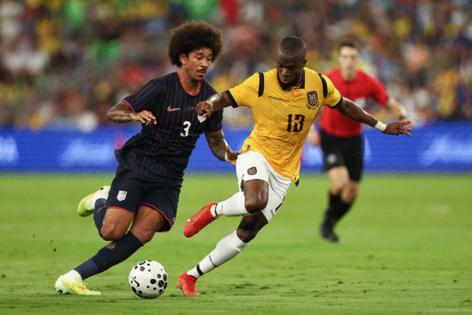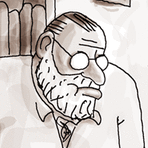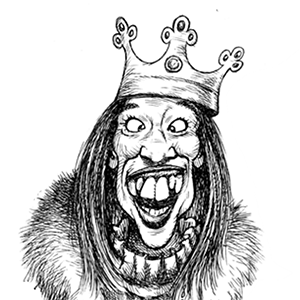Jonathan Tannenwald: The USMNT seems on course to do something it hasn't done in nearly a quarter century
Published in Soccer
AUSTIN, Texas — Much has changed about the U.S. men’s soccer team in the 35 years since the first World Cup of its modern era, in 1990. And there’s no doubt about how much has improved, in so many ways.
But for all that time, one thing has been a near constant. No matter the players, the manager, or the trends of world’s game, the U.S. has almost always set its defense with a four-back line: two centerbacks and two outside backs.
You have to go a long way back to find anything else.
When the Americans ended a 40-year wait to play on the sport’s biggest stage, Bora Milutinović used a 3-5-2 formation — three centerbacks, five midfielders and two forwards — in two of the Americans’ three games.
In 1998, Steve Sampson sent the Americans out in a 3-6-1, and it was a disaster: they finished dead last in the first World Cup after the one they hosted.
Four years later, it worked for once. Bruce Arena sprung a surprise 3-5-2 on Mexico in the Americans’ legendary round-of-16 win, then kept it for the achingly close quarterfinal loss to Germany.
(A hat tip to the dean of the national team press box, Soccer America’s Paul Kennedy, for helping The Philadelphia Inquirer dig through the record books.)
When the 2026 World Cup kicks off, it will have been 24 years since the last time the U.S. played this way on the sport’s biggest stage. And right now, it seems increasingly likely to be the next time.
This has been the biggest talking point of the U.S. team’s October camp so far, from chats with players during the week to Friday’s 1-1 tie with Ecuador.
Explaining the tactics
For a second straight game, manager Mauricio Pochettino set his starting lineup in a 3-4-2-1 formation. It was a great success in last month’s win over Japan, and, while Friday’s version was somewhat different, there was more than enough evidence that it’s likely here to stay.
It certainly helps that the two results were positive. (Yes, a tie counts, because Ecuador is an outstanding team.) But they’ve been positive because the formation suits the player pool.
The case for that starts starting with the wingbacks who take the wide spots in the line of four.
Unfortunately, the players at the top of the depth chart — Antonee “Jedi” Robinson on the left and Sergiño Dest on the right — were sidelined Friday because of injuries. (Robinson was rested, and Dest wasn’t called up in the first place.)
But there are other candidates, including the two who started. Max Arfsten is in line to be Robinson’s backup, and Tim Weah moved back from his attacking role of the past to the right-side role. He has played it plenty at club level, with France’s Marseille this season and Italy’s Juventus in the past. Alex Freeman, a second-half substitute Friday, also has played well in that role.
Using three centerbacks gives them the freedom to get forward and contribute to the attack without having to worry as much about the defensive side as they would in a four-back system.
“I think with me and Max out wide, him more of a natural defender and me more as a winger, it just works really well together,” Weah said. “Then you have flexibility of the midfielders to come out and all the interchanging. It’s just really fun to play, and I think we’re starting to build very positive results with that formation.”
In fact, Weah didn’t have to do much defending at all on Friday, and that was part of the plan. Not for nothing did he call the position “like a fake wingback” on TNT’s pregame show Friday.
Asked about this after the game, Pochettino answered with some humor: “Did you believe him?”
At the time, sort of. By the end of the night, a bit more.
The player it helps the most
The other player who benefits from the new setup is at the other end of the field, and he might benefit more than anyone else. This formation plays to Christian Pulisic’s strengths in a big way.
“It’s a good position for me,” Pulisic said earlier in the week. “I think I can do well in a lot of the attacking positions, but I’ve always felt comfortable coming off the left side but also being in sort of pockets in behind the striker. … [It] allows me to use some of my strengths, get in the box, make runs in behind.”
His assist against Japan last month was proof. Pulisic received the ball from Tim Ream just behind the midfield line, dashed through a hole in the opposing defense, and slipped a pass forward for striker Folarin Balogun to finish.
That was American men’s soccer’s best player playing his best. As obvious as it is to say, the more that happens, the better.
Nor does it just benefit Pulisic in the attacking midfield unit. It suits Malik Tillman, currently the leading candidate to play next to him.
From there, Pochettino can make substitutions based on game state: Gio Reyna for more attacking punch (if he makes the team), Alejandro Zendejas for width, or Medford’s Brenden Aaronson as a defensive closer.
The big question is in central midfield. With two players instead of three, the competition becomes even fiercer to line up next to locked-in starter Tyler Adams.
Adams isn’t here this month, as he awaits the birth of his second child. Nor is Johnny Cardoso, because of an injury. So the contest was open Friday. Aidan Morris and Tanner Tessmann started, with Tessmann playing quite well. Cristian Roldan was a substitute, and James Sands did not play.
Another star faces questions
One big name was not mentioned above: Weston McKennie. Many observers expected him to be in that group, but on Friday he was in one of the attacking midfield spots instead.
“He’s a player that needs freedom because he has the capacity to help in the buildup: dropping [back], but also arriving and scoring goals,” said Pochettino, who called McKennie “a player that can interpret every single situation during the game.”
That’s some high praise. The 27-year-old, whose club home is Italian superpower Juventus, thanked his boss in turn.
“It’s a blessing to be able to have the freedom, and the belief from the coach, to be able to play like that,” he said. “And it obviously gives you a little bit more confidence as well. … If you do have that role, you kind of have to be a guy that wants the ball and finds the ball, and [you] don’t hide from the ball.”
But consider something else Pochettino said — something he might not have meant as criticism, but it perked some ears up.
“It’s to have the obligation, when we don’t have the ball, to find our best organization that is more rigid, because we need to respect our [defensive] position,” he said. “But after, when we have the ball, I think it’s to give him a little bit of that freedom that can provide the team [the] flexibility that we try to find.”
“Rigid” and “organization” haven’t always been associated with McKennie’s play. His usual box-to-box role in a 4-3-3 often has been freewheeling — and not because all his managers wanted it.
The central midfield jobs in the 3-4-2-1, by contrast, often require more positional discipline.
So if he projects in an attacking midfield role, it changes the calculus at two positions. And the attacking one now is remarkably deep, with as many as eight players jousting for World Cup spots.
“I think it’s a good problem to have,” McKennie said, and plenty of people will agree with that.
Will they agree on his place in it, with Pulisic and Tillman playing so well? Perhaps not. That could become one of the biggest stories in the eight months until the World Cup.
____
©2025 The Philadelphia Inquirer. Visit inquirer.com. Distributed by Tribune Content Agency, LLC.







Comments